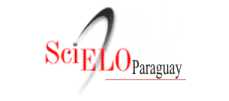Efectividad del ejercicio físico como tratamiento para el linfedema en pacientes con cáncer
Resumen
Introducción: el linfedema es el signo más común en aparecer en el tratamiento de cáncer, especialmente, en el de mama. Esta situación afecta principalmente los miembros superiores, bloqueando los ganglios linfáticos, generando una retención de líquidos, afectando la calidad de vida. Una de las alternativas para tratarlo es el ejercicio físico.
Materiales y métodos: se realizó una revisión sistemática utilizando bases de datos como EMBASE, PubMed, Medscape, MEDLINE y Google Scholar, incluyendo estudios tipo ensayos controlados aleatorios que evaluaran los efectos del ejercicio físico en el linfedema en publicaciones desde enero del 2013 a junio del 2020. Se tomaron en cuenta las recomendaciones de la colaboración Cochrane para la selección de estudios para revisiones sistemáticas, al igual que los criterios de la Declaración PRISMA y la escala de PEDro.
Resultados: se incluyeron un total de 36 artículos, en donde se observó que en 28 estudios la aplicación del ejercicio físico en sus diferentes modalidades generó una disminución de la circunferencia del linfedema, en algunos casos hasta 61% de la medición inicial (p<0,01) y en los 8 artículos restantes se mantuvo, pero mejorando la funcionalidad del miembro afectado y adaptación al mismo (p<0,01).
Conclusiones: la aplicación del ejercicio físico es una alternativa para tratar el linfedema el cual obtiene resultados positivos, mejorando la circunferencia del miembro afectado, funcionalidad, fuerza, sensibilidad y la calidad de vida.
Citas
2. Pérez JA, Salem Ch, Henning L E, Uherek F, Schultz C. Linfedema de miembro superior secundario al tratamiento de cáncer de mama. Cuad Cir. 2001; 15(1): 107-15
3. Gutiérrez Pérez EE, Avalos Nuño J, Salas González E, Montes Velázquez L, Guzman Pantoja JE, Pánuco Ayala P. Prevalencia de linfedema en extremidades superiores secundario a mastectomía por cáncer. Cir Gen. 2014; 36(3):145-49
4. International Agency for Research on Cancer. Cancer tomorrow /Internet/. World Health Organization; 2020. [cited 2020 Apr 14]. Available from: https://gco.iarc.fr/tomorrow/home
5. Barrios E, Garau M. Cáncer: magnitud del problema en el mundo y en
Uruguay, aspectos epidemiológicos. An Facultad Med (Univ Repúb Urug). 2017; 4(1):9-46
6. Mera PC, Ortiz M. La relación del optimismo y las estrategias de afrontamiento con la calidad de vida de mujeres con cáncer de mama. Ter Psicol. 2012; 30(3): 69-78
7. Winkels RM, Sturgeon KM, Kallan MJ, Dean LT, Zhang Z, Evangelisti M, et al. The women in steady exercise research (WISER) survivor trial: The innovative transdisciplinary design of a randomized controlled trial of exercise and weight-loss interventions among breast cancer survivors with lymphedema. Contemp Clin Trials. 2017; 61:63-72
8. Ruegsegger GN, Booth FW. Health benefits of exercise. Cold Spring Harb Perspect Med. 2018; 8: a029694. doi: https://doi.org/10.1101/cshperspect.a029694
9. Nystoriak MA, Bhatnagar A. Cardiovascular effects and benefits of exercise. Front Cardiovasc Med. 2018; 5:135. doi: 10.3389/fcvm.2018.00135
10. Williamson J, Pahor M. Evidence regarding the benefits of physical exercise. Arch Intern Med. 2010; 170(2): 124-25. doi: 10.1001/archinternmed.2009.491
11. Baumann FT, Reike A, Reimer V, Schumann M, Hallek M, Taaffe DR, et al. Effects of physical exercise on breast cancer-related secondary lymphedema: a systematic review. Breast Cancer Res Treat. 2018; 170(1): 1-13. doi: 10.1007/s10549-018-4725-y
12. Vicente-Rodríguez G, Benito PJ, Casajús JA, coordinadores. Actividad física, ejercicio y deporte en la lucha contra la obesidad infantil y juvenil. Nutr Hosp. 2016; 33(supl.9): 1-21
13. Schwartz A, Dirk de Heer H, Bea JW. Initiating exercise interventions to promote wellness in cancer patients and survivors. Oncology (Williston Park). 2017; 31(10): 711–17
14. McNeely ML, Dolgoy N, Onazi M, Suderman K. The interdisciplinary rehabilitation care team and the role of physical therapy in survivor exercise. Clin J Oncol Nurs. 2016; 20(6 Suppl), S8-S16. doi: 10.1188/16.CJON.S2.8-16
15. Asociación Médica Mundial. Declaración de Helsinki de la AMM – Principios éticos para las investigaciones médicas en seres humanos [online]. Asociación Médica Mundial; 2017. [Acceso 15 Abril 2020]. Disponible en: https://www.wma.net/es/policies-post/declaracion-de-helsinki-de-la-amm-principios-eticos-para-las-investigaciones-medicas-en-seres-humanos/
16. Urrútia G, Bonfill X. Declaración PRISMA: una propuesta para mejorar la publicación de revisiones sistemáticas y metaanálisis. Med Clín (Barc). 2010; 135(11): 507–511. doi: 10.1016/j.medcli.2010.01.015
17. Mamédio da Costa Santos C, Andrucioli de Mattos Pimenta C, Cuce Nobre MR. The PICO strategy for the research question construction and evidence search. Rev Latino-Am Enfermagem. 2007; 15(3): 508–11. doi: 10.1590/S0104-11692007000300023
18. Maher ChG, Sherrington C, Herbert RD, Moseley AM, Elkins M. Reliability of the PEDro scale for rating quality of randomized controlled trials. Phys Ther. 2003; 83(8):713-21
19. Verhagen AP, De Vet HCW, De Bie RA, Kessels AGH, Boers M, Knipschild PG. Balneotherapy and quality assessment: interobserver reliability of the Maastricht criteria list and the need for blinded quality assessment. J Clin Epidemiol. 1998; 51(4): 335-41
20. Moseley AM, Herbert RD, Sherrington C, Maher ChG. Evidence for physiotherapy practice: A survey of the Physiotherapy Evidence Database (PEDro). Aust J Physiother. 2002;48(1):43-9 doi: 10.1016/s0004-9514(14)60281-6
21. Zhang L, Fan A, Yan J, He Y, Zhang H, Zhang H, et al. Combining manual lymph drainage with physical exercise after modified radical mastectomy effectively prevents upper limb lymphedema. Lymphat Res Biol. 2016; 14(2): 104-8
22. Hayes S, Reul-Hirche H, Turner J. Exercise and secondary lymphedema : safety, potential benefits, and research issues. Med Sci Sports Exerc. 2009; 41(3): 483-89
23. Ochalek K, Gradalski T, Szygula Z. Five-year assessment of maintenance combined physical therapy in postmastectomy lymphedema. Lymphat Res Biol. 2015; 13(1): 54-8
24. Navarro-Sanz A, Espejo-Reina A, Cerezo-Guzman MV, Fernandez-Ortega JF, Meza-Leiva H, Conejo-Tirado I, Santiago-Sanchez C. Synchronized pedaling with martial arts improves quality of life of women with breast cancer. Int J Sports Med. 2018; 39(13): 978-83
25. Pereira J, Velásquez X, Peñaranda D, Pereira P, Pereira R, Carranza M. Impacto del entrenamiento de fuerza en el perfil lipídico de los pacientes con insuficiencia cardiaca. Ensayo clínico aleatorizado (Strong Hearts Trial). Acta Médica Grupo Ángeles. 2020; 18 (1): 33-43. doi: 10.35366/91998.
26. Lane KN, Dolan LB, Worsley D, McKenzie DC. Upper extremity lymphatic function at rest and during exercise in breast cancer survivors with and without lymphedema compared with healthy controls. J Appl Physiol (1985). 2007; 103(3): 917-25. doi: 10.1152/japplphysiol.00077.2007
27. Bok SK, Jeon Y, Hwang PS. Ultrasonographic evaluation of the effects of progressive resistive exercise in breast cancer-related lymphedema. Lymphat Res Biol. 2016; 14(1): 18–24. doi: 10.1089/lrb.2015.0021
28. Buchan J, Janda M, Box R, Schmitz K, Hayes S. A randomized trial on the effect of exercise mode on breast cancer- related lymphedema. Med Sci Sports Exerc. 2016; 48(10): 1866–74. doi: 10.1249/MSS.0000000000000988
29. Cormie P, Singh B, Hayes S, Peake JM, Galvão D, Taaffe DR, et al. Acute inflammatory response to low-, moderate-, and high-load resistance exercise in women with breast cancer-related lymphedema. Integr Cancer Ther. 2016; 15(3): 308–17. doi: 10.1177/1534735415617283
30. Do JH, Kim W, Cho YK, Lee J, Song EJ, Chun J, Jeon JY. Effects of resistance exercises and complex decongestive therapy on arm function and muscular strength in breast cancer related lymphedema. Lymphology. 2015; 48(4): 184–96
31. Singh B, Newton RU, Cormie P, Galvao DA, Cornish B, Reul-Hirche H, et al. Effects of compression on lymphedema during resistance exercise in women with breast cancer-related lymphedema: a randomized, cross- over trial. Lymphology. 2015; 48(2):80-92
32. Singh B, Buchan J, Box R, Janda M, Peake J, Purcell A, et al. Compression use during an exercise intervention and associated changes in breast cancer-related lymphedema. Asia Pac J Clin Oncol. 2016; 12(3): 216–24. doi: 10.1111/ajco.12471
33. Alpozgen A, Razak Ozdincler A, Karanlik H, Yaman Agaoglu F, Narin A N. Effectiveness of pilates-based exercises on upper extremity disorders related with breast cancer treatment. Eur J Cancer Care. 2016; 26(6), e12532. doi: 10.1111/ecc.12532
34. Loudon A, Barnett T, Piller N, Immink MA, Williams AD. Yoga management of breast cancer-related lymphoedema: a randomised controlled pilot-trial. BMC Complement Altern Med. 2014; 14:214. doi: 10.1186/1472-6882-14-214
35. Bloomquist K, Adamsen L, Hayes SC, Lillelund Ch, Andersen Ch, Christensen KB, et al. Heavy-load resistance exercise during chemotherapy in physically inactive breast cancer survivors at risk for lymphedema: a randomized trial. Acta Oncol. 2019; 58(12):1667-75. doi:10.1080/0284186X.2019.1643916
36. Temur K, Kapucu S. The effectiveness of lymphedema self-management in the prevention of breast cancer-related lymphedema and quality of life: A randomized controlled trial. Eur J Oncol Nurs. 2019; 40:22-35. doi:10.1016/j.ejon.2019.02.006
37. Arinaga Y, Piller N, Sato F, Ishida T, Ohtake T, Kikuchi K, et al. The 10-Min holistic self-care for patients with breast cancer-related lymphedema: Pilot randomized controlled study. Tohoku J Exp Med. 2019; 247(2):139-47. doi: 10.1620/tjem.247.139
38. Ammitzbøll G, Kristina Kjær T, Johansen C, Lanng C, Andersen EW, Kroman N, et al. Effect of progressive resistance training on health-related quality of life in the first year after breast cancer surgery - results from a randomized controlled trial. Acta Oncol. 2019; 58(5):665-72. doi:10.1080/0284186X.2018.1563718
39. Ammitzbøll G, Johansen C, Lanng C, Andersen EW, Kroman N, Zerahn B, et al. Progressive resistance training to prevent arm lymphedema in the first year after breast cancer surgery: Results of a randomized controlled trial. Cancer. 2019; 125(10):1683-92. doi: 10.1002/cncr.31962
40. Lund LW, Ammitzbøll G, Hansen DG, Andersen EAW, Dalton SO. Adherence to a long-term progressive resistance training program, combining supervised and home-based exercise for breast cancer patients during adjuvant treatment. Acta Oncol. 2019; 58(5):650-57. doi:10.1080/0284186X.2018.1560497
41. Negussie H, Molla M, Ngari M, Berkley JA, Kivaya E, Njuguna P, et al. Lymphoedema management to prevent acute dermatolymphangioadenitis in podoconiosis in northern Ethiopia (GoLBeT): a pragmatic randomised controlled trial. Lancet Glob Health. 2018; 6(7):e795-e803. doi: 10.1016/S2214-109X(18)30124-4
42. Iyer NS, Cartmel B, Friedman L, Li F, Zhou Y, Ercolano E, et al. Lymphedema in ovarian cancer survivors: Assessing diagnostic methods and the effects of physical activity. Cancer. 2018; 124(9):1929-37. doi: 10.1002/cncr.31239
43. Kizil R, Dilek B, Şahin E, Engin O, Soylu AC, Akalin E, Alper S. Is continuous passive motion effective in patients with lymphedema? A randomized controlled trial. Lymphat Res Biol. 2018;16(3):263-269. doi:10.1089/lrb.2017.0018
44. Oliveira MMF, Gurgel MSC, Amorim BJ, Ramos CD, Derchain S, Furlan-Santos N, Dos Santos CC, Sarian LO. Long term effects of manual lymphatic drainage and active exercises on physical morbidities, lymphoscintigraphy parameters and lymphedema formation in patients operated due to breast cancer: A clinical trial. PLoS One. 2018; 13(1):e0189176. doi: 10.1371/journal.pone.0189176
45. Ochalek K, Gradalski T, Szygula Z, Partsch H. Physical activity with and without arm sleeves: Compliance and quality of life after breast cancer surgery-A randomized controlled trial. Lymphat Res Biol. 2018; 16(3):294-9. doi:10.1089/lrb.2017.0045
46. Dönmez AA, Kapucu S. The effectiveness of a clinical and home-based physical activity program and simple lymphatic drainage in the prevention of breast cancer-related lymphedema: A prospective randomized controlled study. Eur J Oncol Nurs. 2017; 31:12-21. doi: 10.1016/j.ejon.2017.09.004
47. Bloomquist K, Oturai P, Steele ML, Adamsen L, Møller T, Christensen KB, et al. Heavy-Load lifting: Acute response in breast cancer survivors at risk for lymphedema. Med Sci Sports Exerc. 2018; 50(2):187-95. doi: 10.1249/MSS.0000000000001443
48. Ergin G, Karadibak D, Sener HO, Gurpinar B. Effects of aqua-lymphatic therapy on lower extremity lymphedema: A randomized controlled study. Lymphat Res Biol. 2017; 15(3):284-91. doi: 10.1089/lrb.2017.0017
49. Fukushima T, Tsuji T, Sano Y, Miyata C, Kamisako M, Hohri H, et al. Immediate effects of active exercise with compression therapy on lower-limb lymphedema. Support Care Cancer. 2017; 25(8):2603-10. doi: 10.1007/s00520-017-3671-2
50. Freire de Oliveira MM, Costa Gurgel MS, Pace do Amaral MT, Amorim BJ, Ramos CD, Almeida JG, et al. Manual lymphatic drainage and active exercise effects on lymphatic function do not translate into morbidities in women who underwent breast cancer surgery. Arch Phys Med Rehabil. 2017; 98(2): 256-63. doi:10.1016/j.apmr.2016.06.024
51. Singh B, Buchan J, Box R, Janda M, Peake J, Purcell A, et al. Compression use during an exercise intervention and associated changes in breast cancer-related lymphedema. Asia Pac J Clin Oncol. 2016; 12(3):216-24. doi:10.1111/ajco.12471 (REPETIDO Ver N° 32)
52. Brown JC, Schmitz KH. Weight lifting and physical function among survivors of breast cancer: A post hoc analysis of a randomized controlled trial. J Clin Oncol. 2015; 33(19):2184-9. doi: 10.1200/JCO.2014.57.7395
53. Courneya KS, Segal RJ, Mackey JR, Gelmon K, Reid RD, Friedenreich CM, et al. Effects of aerobic and resistance exercise in breast cancer patients receiving adjuvant chemotherapy: a multicenter randomized controlled trial. J Clin Oncol. 2007; 25(28):4396-404. doi:10.1200/JCO.2006.08.2024
54. Devoogdt N, Christiaens MR, Geraerts I, Truijen S, Smeets A, Leunen K, et al. Effect of manual lymph drainage in addition to guidelines and exercise therapy on arm lymphoedema related to breast cancer: randomised controlled trial. BMJ. 2011; 343: d5326. doi:10.1136/bmj.d5326
55. Rebegea L, Firescu D, Dumitru M, Anghel R. The incidence and risk factors for occurrence of arm lymphedema after treatment of breast cancer. Chirurgia (Bucur). 2015;110(1):33-37

















